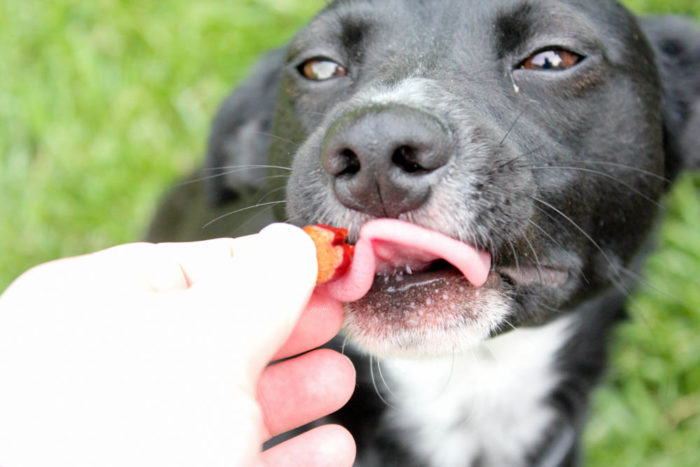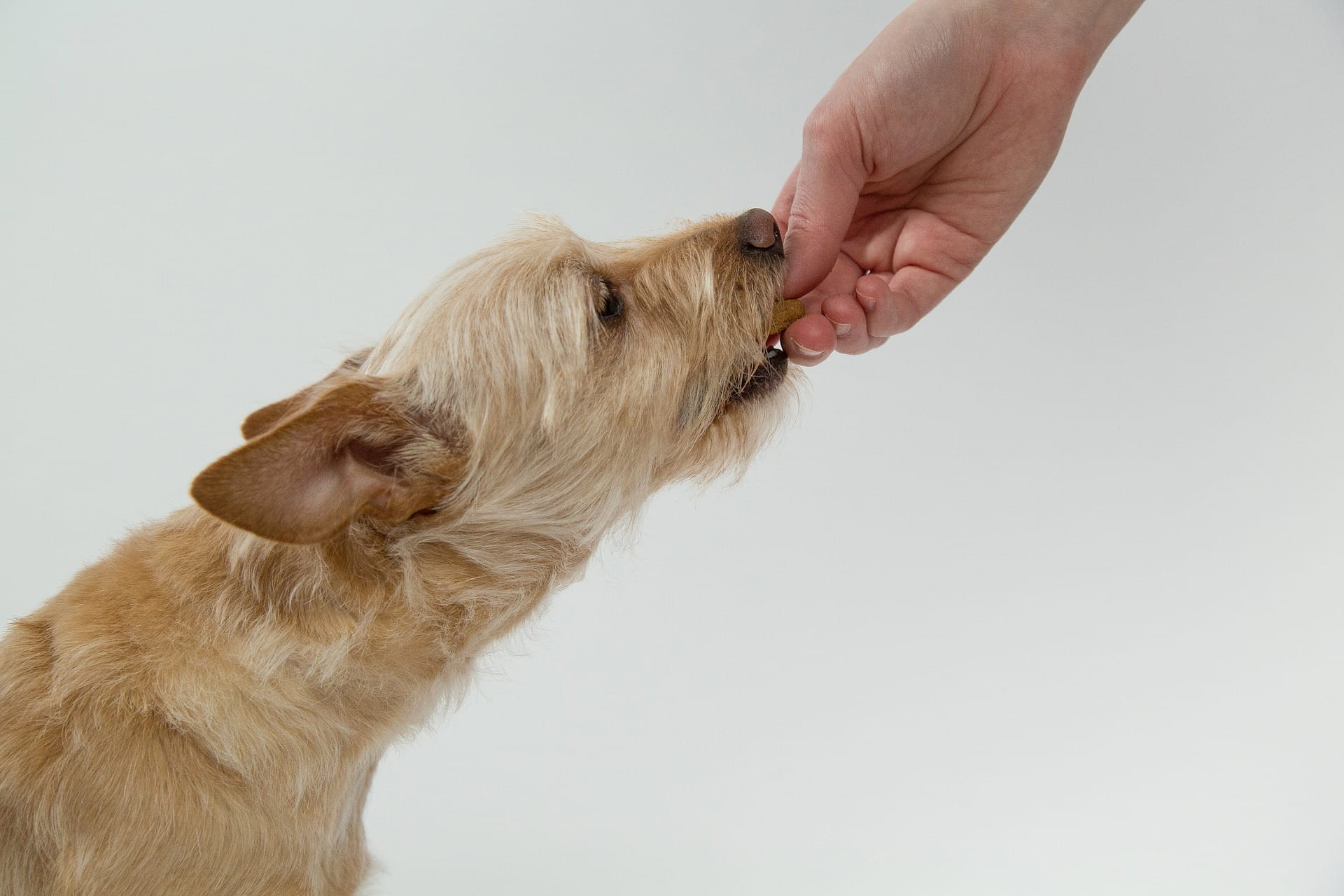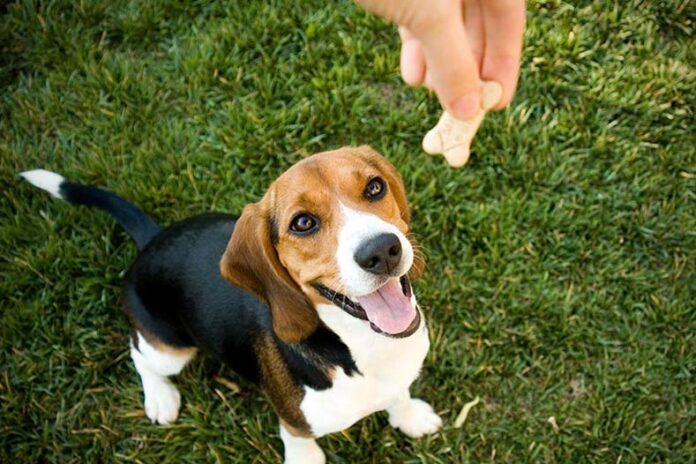Last Updated on February 13, 2024 by Fumipets
Choosing the Right Treats: A Guide to Effective Dog Training Rewards
Training your dog is a rewarding journey that strengthens the bond between you and your furry companion. One crucial element of successful training is selecting the right treats as incentives. The type of treats you choose can significantly impact your dog’s motivation and responsiveness during training sessions.
In this guide, we will explore the key considerations in selecting training treats, ensuring that your canine friend is not only well-behaved but also enjoys the learning process.
The Right Treats
The type of dog treat you use while teaching your dog may make a major difference in how effective your training sessions are.
The correct dog training treat may help a dog concentrate more readily around distractions. And in certain situations, a reward could be so distracting in and of itself that a dog can’t concentrate on the activity at hand!
Many dog training customers are often asking what sort of reward they should use with their dogs. With so many alternatives available, it might be hard to decide what dog treats you should purchase.
There is an easy solution to this question. Use any training reward your dog prefers! However, learning how to “grade” your dog’s goodies and keeping them diverse can assist you in a few ways:
You’ll be able to learn new habits quicker
You’ll be able to fade out the usage of food rewards in training more effectively
Your dog will be more focused on you (and receptive to you) around distractions
Your dog won’t grow weary of the “same-old” treat
You can better regulate your dog’s reward calorie intake
Read on for ideas to discover out what training treats your dog enjoys most and when to utilize various goodies to strengthen your dog’s training.

How to Figure Out What Treats Your Dog Likes
You may hear your dog trainer speak about utilizing “high value” vs. “low value” training treats – this is referring to the value your dog puts in each food reward, not the money you spend for the treats at the shop. You’ll want to figure out what goodies your dog considers more important than others.
While there are certain fundamental assumptions we make about what treats dogs hold in more respect, there always appears to be exceptions to the norm. One training customer of mine had a dog that greatly liked dry and tasteless rewards over smelling freeze-dried liver!
What Are “High Value” Dog Treats?
High-value rewards tend to be wet or freeze-dried, particularly fragrant, and something your dog doesn’t receive very frequently (if at all) outside of training sessions. Think little chunks of chicken, liverwurst, tripe, or even peanut butter (make sure it’s xylitol-free) slathered on a spoon. Think of your high-value goodies as earning your dog an “A+++” for behaviour and training.
When Should You Use High-Value Treats?
When initially introducing a fresh new habit
In extremely distracting circumstances, such as a group dog training class
When praising your dog for a speedy or high-quality reaction to a cue
During critical socialization and proactive exposure training for puppies
If working on counter conditioning as part of a behavior modification strategy for leash reactivity, aggressiveness, anxiety, or terror

What Are “Medium-Value” Dog Treats?
These snacks are generally semi-moist or dry treats derived from substances that your dog doesn’t receive in their normal meal. Medium value goodies and are provided more often during training sessions and in daily routines than high-value treats.
When Should You Use Medium Value Treats?
When retaining a previously learnt habit
In slightly distracting surroundings
Throughout the day for exemplary conduct
As part of regular enrichment activities
What Are “Low-Value” Dog Treats?
Fewer value rewards are wonderful to integrate into your training since they tend to be lower calorie than high and medium value dog treats. Low-value sweets are frequently dry and crispy. Having a low-value reward choice is vital in helping you fade out goodies in training.
When Should You Use Low-Value Treats?
If your dog executes a desired and previously generalized cue, but it’s a “C” grade performance (this also can signal that your dog has to be farther from a distraction or might need to go back a few steps in training) (this also might indicate that your dog needs to be further from a distraction or might need to go back a few steps in training)
Throughout the day to promote continuous excellent conduct
In low to no distraction training conditions
As part of regular enrichment activities
When you’re working on fading away the usage of rewards for a certain behaviour

Have a Dog Treat “Taste Test”
To assist you to choose out the training goodies that your dog will most love and react to the best, set up a treat taste test for your pooch. (Note: Check treat ingredients to ensure they don’t include anything your dog is allergic or sensitive to.)
First, choose out a few different alternatives of snacks for them to taste, depending on:
Protein type: Have a selection of fish, chicken, beef, pig, or lamb. Include non-meat-based delicacies, such as peanut butter.
Texture: Choose several treat alternatives depending on their texture type – dry, semi-moist, jerky, freeze-dried, or wet.
Ease of Delivery: When you’re selecting out taste test alternatives, make sure you’re choosing goodies that are simple for you to give your dog. Training snacks should be pea-sized or smaller. Whether the snacks are bigger than this in the bag, try if you can easily split them up into smaller bits.
Next, offer your dog an option between the various goodies. Put one sort of reward in one hand and a different kind in the other hand, then close your hands to create a fist. (You may also use little containers to cover the treat alternatives on the ground if you like, particularly if your dog becomes mouthy while accepting goodies.)
Allow your dog to smell both hands, observing to see which they show the greatest interest in. Give them the one they smell at, lick at, or paw at the most.
Switch out various treats, rotating in ones you’ve previously tried with other alternatives, to get an understanding of what your dog’s high-value, medium-value, and low-value treats are.
Q&A: Decoding the Ideal Training Treats for Your Dog
Why are treats essential for dog training?
Treats serve as positive reinforcement, providing an immediate reward for desired behaviors. They create a positive association with training, making the learning experience enjoyable for your dog.
What qualities should I look for in training treats?
Opt for small, soft treats that are easy to chew and swallow quickly. Consider your dog’s dietary needs, and choose treats with high palatability to maintain interest during training.
Are homemade treats a good option for training?
Homemade treats can be an excellent choice, provided they are safe and meet your dog’s nutritional requirements. Ensure they are free from harmful ingredients, and monitor for any adverse reactions.
How can I use treats effectively in training without overfeeding my dog?
Adjust your dog’s daily meals to accommodate treat calories, and choose low-calorie treats. Break treats into smaller pieces for multiple rewards during a session, and use praise and play as additional reinforcements.
Should I consider my dog’s preferences when selecting treats?
Absolutely! Understanding your dog’s taste preferences ensures that the treats are enticing and motivating. Experiment with different flavors and textures to find what resonates most with your furry friend.


















